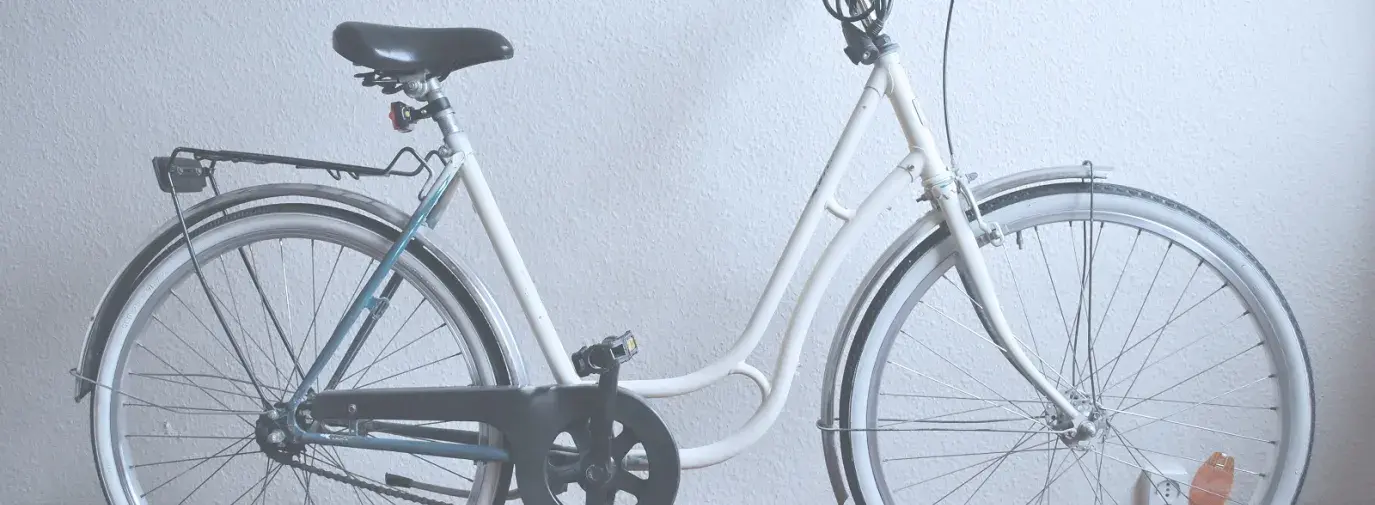
Andrew Gondzur of St. Louis, Missouri, used to ride his bike about four times a year—until last month, when he found himself choosing his bike instead of his car to run errands at least three times a week. What changed? Andrew installed a kit that added a rechargeable electric motor to his old bike. He still usually pedals his bike, but with a twist of the handlebar, he can get a bit of motorized help.
“I can go farther and faster than I would if I were just pedaling,” he says, which is why Andrew now takes his bike, not his car, to the post office, the library, his children’s schools, and the grocery store. “Why take 5,000 pounds of car and burn expensive gas to get one thing you forgot at the supermarket? Now I leave my car at home.”
If, like most Americans, you find yourself hopping in your car to drive down the street and around the corner, consider one alternative: “zooming” your way there instead on a quiet and speedy pedal assisted electric bike. Though you may balk at regularly biking more than a mile or two, summer is the perfect time to consider a bike with a little electric “oomph”—a green alternative to driving that doesn’t require you to travel entirely on your own foot or pedal power.
Consumers looking to leave the car at home—or forego a second car—can now find a new generation of “person-assisted” electrified conventional bikes and recumbant bikes (where the rider reclines while pedaling). These vehicles offer a transportation solution that’s far preferable to going by car: they save gas money, run quietly, reduce pollution and global warming emissions—and riding them is fun.
Is an Electric Bicycle Right for You?
Curious if an electric bike might be a good solution for you? Try taking a transportation audit, noting over a single week how many times you jump into your car to go only a few miles roundtrip. If you’re like most Americans, you likely drive fairly short distances, as a Bureau of Transportation Statistics study found that up to 69% of car trips are two miles or less, and many of these trips may be bikeable.
Hopping into the car for these short trips to work, the playground, and the supermarket may not seem like a decision with a big impact, but all of those car miles add up. Cars emit the heat-trapping greenhouse gases that cause climate change, as well as pollutants such as nitrogen oxide, sulfur oxide, and ground-level ozone, which contribute to acid rain, smog, and health problems. In fact, short trips by car can actually be more polluting per mile than long trips, because pollution is highest in the first few minutes of driving, according to the Colorado Department of Transportation. Cutting a four mile trip out of your schedule each weekday can reduce your global warming pollution by more than 1,200 pounds a year, estimates Environmental Defense.
And as gas prices continue to rise, the cost of short trips by car is steep—just fueling a round-trip commute to a job five miles away every weekday for a year can cost $300 or more just for fuel, not including parking fees and any additional fuel used for after-work errands and weekend driving.
How Electric Bicycles Work
Motorized bikes, sometimes called “power- assisted vehicles,” “human-electric hybrids,” or “pedelecs” (for “pedal electric” cycles) combine the driver’s pedaling with a motorized assist from a rechargeable electric battery, which can be plugged into any standard outlet. This is in contrast to mopeds or motorcycles, which run on gas and have combustion engines like those in cars, and also in contrast to other types of electric bikes and scooters that run entirely on electricity without any pedal power from the rider.
These vehicles often look just like conventional bikes, and some are even converted from conventional bikes. The motor is sometimes attached to the frame, or in some cases hidden away discretely within the frame.
With some pedaled e-bikes, the rider turns the electric assistance on or off using a toggle or a twist of the handlebar, and can choose an entirely electric ride, an entirely pedaled ride, or a ride combining electric with pedal power.
With a “pedelec,” on the other hand, the rider just gets on, pedals, and switches gears when needed, as if riding a standard non-electric bike. A computerized sensor combines force from the battery seamlessly with the rider’s own pedal power, and gives the biggest “push” when the rider needs it most: usually in kicking off initially and in surmounting hills. At higher speeds, when the rider’s own pedaling has the bike cruising at a fast and steady pace, the battery-powered motor’s contribution can drop out almost to zero. With most human-electric hybrid cycles, you can also choose to ride the bicycles as a regular non-electric bike for extra exercise.
For all types, the motor and battery itself can add a little bit of weight to the bike, around 20 pounds—roughly comparable to adding a couple of textbooks to your backpack.
Electric bikes can go anywhere from 20–50 miles between charges. They are generally classified by law as “low-speed electric bicycles,” because they tend to go about 20–25 miles an hour. They don’t require a license plate or vehicle insurance in most states, but check the rules for where you live. And because they’re electric rather than combustion-powered, a trip on these motorized bikes is quiet—quiet enough to hear the birds singing on the way to wherever you’re going.
Drivers of these vehicles value the motorized boost that helps them more easily pedal up daunting hills, get home with groceries or other heavy loads, pedal a small child to school in a child seat or wheeled trailer, and commute to work in dress clothes without breaking a sweat. And for short trips, riding an electric bike can be faster than driving a car, especially because you won’t get stuck in traffic or can head for the bike rack by the door rather than driving around seeking parking. And drivers of motorized bikes still get exercise from pedaling, albeit with a little electric help—so these bikes offer more exercise than driving that’s a little less strenuous than pedaling a conventional bike.
Greener Than a Second Car
Compared to taking a car or some other gas-powered vehicle, these human-powered vehicles with electric assist travel completely clean, with no carbon dioxide emissions or other pollutants.
Even when you factor in the pollution that might have been used to generate the energy to charge your vehicle, electric bikes are only one-tenth as polluting as driving a car the same distance, according to Electric-Bikes.com.
Many users of motorized bikes also find that they save a bundle on gas and parking—offsetting the cost of the vehicle over time. And in some families, an electric bike can make it unnecessary to purchase a second car and the associated insurance, easily a $10-20,000 savings.
Hauling Stuff on Your Bike
Sometimes the “luggage problem” of getting heavy things home by bike can be so daunting that would-be riders choose cars instead. Having the capacity for an electric assist from a motorized bicycle can help to address that problem. In addition to side baskets or saddle bags, you can also find bike attachments designed to haul the extra-heavy weight of furniture, instruments, and even construction supplies—like the “Sports Utility Bike” accessories from XtraCycle.
Other Considerations
The scooters and bikes available today vary in quality, warns Chip Gribben at ScooterWerks, an electric bike and scooter repair shop in Laurel, Maryland. He encourages customers to purchase electric bikes at retail stores that will service them. If you buy online, choose a company that guarantees it will provide spare parts if the bike needs repairs.
Also, customers who shop with both people and the planet in mind may have trouble learning much about how some of these bikes were manufactured, says Tish Kashani, the screening manager for Green America’s Green Business Network™. “I hope in time that more and more manufacturers of ‘green bikes’ will provide their customers with information about where the products are made and under what conditions,” she says. “Then these vehicles will truly be a win-win-win—for the pocketbook, for people, and for the planet.”
For the Future
Electric bikes hold out the prospect of helping get cars off the road and reducing emissions, pollution, and gas use. In addition to the financial and environmental benefits, electric bike owners are quick to add that riding these vehicles is fun—and they get “thumbs up” and other encouragement from neighbors as they go by.
Andrew Gondzur says his children don’t miss carpool—they’re thrilled to be taken to school in a rolling trailer on the back of his motorized bike. “They love it,” he says. “They sit back there and yell, ‘faster! faster!’”
Resources
Leading Motorized Bike and Conversion Kit Retailers:
• BionX
• Dimension Edge, retro-fit kit for any bike, 800/652-8495..
• Lightfoot Cycles, 406/821-4750.
• Schwinn, "Campus" bikes, 800/666-8813.
Solar Charger Retailers:
You will need to discuss the specifications of a particular bike battery to finda solar charger with a re-charge time that's consistent with your needs and the sunlight where you live.
• Cycle Safe, Solar bike lockers, 888/950-6531.
• Solar-Shell, Solar bike lockers, 800/245-3723.
Other Resources:
• Better World Club, The green alternative to AAA, providing the nation's only 24-hour roadside assistance service for bicycles, as well as cars. 866/238-1137.
• Xtra Cycle, Offers accessories for turning your bike, electric or otherwise, into a cargo hauler. , 888/537-1401.







